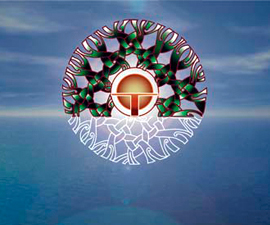In pursuit of wellbeing for our people: Te Pae Tawhiti represents a desired future, a future which will be realised when our people, through their own endeavours, are able to enjoy a quality of lifestyle where:
- Their mauri or spiritual essence is vibrant and empowering.
- Their spiritual, intellectual, emotional and physical wellbeing is strong.
- They are conversant, secure and pro-active participants in all facets of social, cultural, economic and political life.
- The whānau, marae, hapū and iwi, as pillars of cultural, social, political and economic Māori life, have become the basis for their collective cultural, social and economic development.
- They are comfortable and competent in both the Māori and the modern world.
- They are well educated, able to realise their full potential and to readily cope with the challenges of a rapidly changing modern world.
- Their whanaungatanga has been rejuvenated and developed to the extent that the whanau has become a strong and valued support unit for all its members.
- They play a positive and active role within their extended whānau, hapū, iwi and the wider community.
- They are enterprising and employing resources to contribute to their independence and wellbeing.
- The Māori identity, culture and values are widely understood and respected by New Zealanders.
- The Treaty of Waitangi is properly honoured as a covenant between Māori and other New Zealanders.
- They are able to live with dignity and in harmony with the cultural, social and physical environments that they share with all people.
Derek Lardelli's Visual Interpretation of:
Te Pae Tawhiti

As we search along the horizon line over the pristine waters of Tangaroa (God of the Ocean) and the endless expanses of Ranginui (The Sky Father) our eyes are drawn to a stylised depiction of rising of the great Tama-nui-te-rā (the sun), the energy source from which all life originates. His warm rays reflecting off the majestic waters of Tangaroa and streaking the vast expanses of Ranginui.
From the outset one distinguishes that the stylised depiction of Tama-nui-te-rā is duel in nature. For it is also a representation of the out-stretched growth of a mighty Kahikatea (White Pine) of Tāne Mahuta (God of the Forest). The central "T" shaped symbol representing the Kahikatea’s trunk. The white lines stretching beneath the horizon depicting Its intertwined root system and arching above the horizon the woven green foliage or strands representing its towering rooftop canopy.
The Kahikatea is Aotearoa’s tallest native tree, but unlike other native giants such as the Tōtara and the Kauri which root deep into the ground to avoid being blown over by the strong winds of Tāwhirimātea (God of Winds) the Kahikatea possesses a shallow root system. Therefore to gain strength the Kahikatea only ever grows in Uru Kahikatea (Kahikatea groves), entwining its root system with other Kahikatea to form a strong matted knot allowing it to grow to mighty heights. Its strength and stability is therefore gained from a collective unity of purpose.
The Kahikatea and its unique growth cycle has been drawn upon as a metaphor by Derek Lardelli in representing Te Pae Tawhiti (The Distant Horizon), the desired future where our people through shared aspirations are able to enjoy a quality of lifestyle where their mauri is both vibrant and empowering.
Therefore the trunk of the Kahikatea represents Māori language and culture, the heart of our being as a people. The intangible roots that stretch beneath the horizon represent our Whakapapa Māori, the many intertwining intangible genealogical ties connecting us to our world in all its complexities, to our past, to our present and our future, the solid base upon which we stand as an indigenous people. The woven green (reminiscent of Papatūānuku) foliage or strands, stretching above represent our continual growth as Māori and the tangible human interconnection of whānau, hapū and iwi, this is also illustrated with the red lines representing the bloodline of Māori.
Therefore Derek Lardelli’s visual interpretation of Te Pae Tawhiti envisions a desired future where Māori inspired through collective inspirational goals can stand proud and true similar to a Uru Kahikatea (Kahikatea grove) drawing its strength from the collective with Māori language and culture as the core values able to grow strong and tall and weather the most fiercest of storms. Also, as a grove of Kahikatea stands strong to the natural elements, so do we as a Māori people, standing strong against the trials and tribulations of the ever changing world.